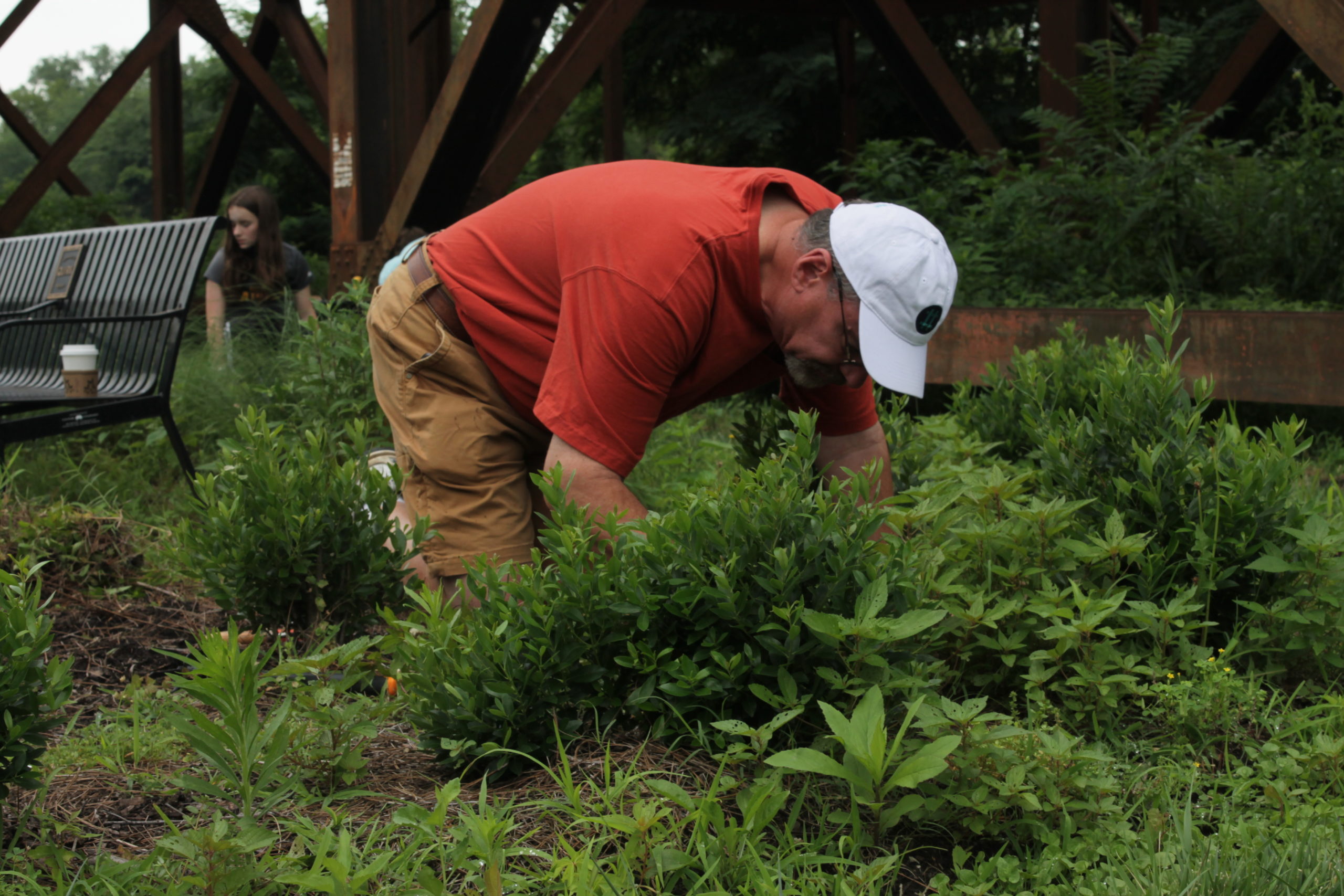Author: Kevin Finto, Chair of Board of Trustees
Anna Aquino is a wonderfully creative landscape designer. I knew that from her work around Richmond. What I did not know before I joined Capital Trees with her a few years ago is that she is passionate about sustainable gardening. Anna has committed a staggering amount of time and effort researching and cataloging techniques, experimenting with them, testing them, and educating others about what works and what does not work. She has done this not only for individual residential gardens but also at public landscape scale. One example is the Low Line, a series of gardens that Capital Trees installed and now maintains along Dock Street in Richmond. Anna’s work is of great value.

Through her talent and dedication, Anna has inspired Capital Trees to incorporate sustainable methods into our public landscapes and their maintenance, whenever and wherever feasible. We do this to protect and enhance the long-term quality of the soil matrix, the adjacent waters of the James River and the wildlife habitat along it. Quality public landscapes demand quality maintenance. This is not easy. The use of sustainable methods involves substantially more materials, labor and thoughtful management, and their related cost grows with size of the landscape. The efficiency of the techniques often have a learning curve. Their effectiveness is subject to many variables and is site specific. For example, because we are dealing with biology and the seasons, timing is everything. So we continue to ride the learning curves down, experiment along the way, work on our timing, take small steps where appropriate, make progress and see promising results.
Sustainable methods protect the localized environment in meaningful ways – better soil, cleaner water, more abundant and diverse wildlife. The causal connection is also meaningful. At its root, environmental protection is about avoiding adverse unintended consequences. (1) There are countless stories about a chemical intended to improve our lives that also did great harm. In general, unintended consequences are largely the result of ignorance (we did not know something), error (we thought we knew, but we were wrong) or impatience (we did not take the time to think it through and do it right). (2) When done correctly and diligently, sustainable gardening minimizes adverse unintended consequences because it uses well-understood things and methods and it is thoughtful and careful. For example, we know the impacts of pulling a weed by hand; and with some training and care, we only pull the weeds and not the perennials. Sustainable techniques can also lead to beneficial intended consequences. Anna showed us that her individual work alone would not be sufficient to implement her techniques at such a large scale as a public landscape. So Capital Trees increased its organizational capacity and created a program to recruit and educate interested individuals and groups to carefully maintain those landscapes. The result is a volunteer corps that enriches the community. That is a great consequence.

Anna initially researched and prepared a sustainability report that cataloged and analyzed sustainable methods. Seeing the potential for other greening groups to benefit from her work, Capital Trees considered options for presenting it. In this day of rapid change and social media, we concluded that it should be a forum to collect and discuss information continuously from all corners. This blog is the result and Anna’s initial writing is its core. We hope that you will engage in some lively discussion to learn and contribute your experiences, ideas and opinions. That also will be of great consequence.
(1) Rachel Carson, Silent Spring, Mariner Books; Anniversary edition (October 22, 2002); https://www.rachelcarson.org/
(2) Robert K. Merton, The Unanticipated Consequences of Purposive Social Action American Sociological Review, 1 (6), Dec. 1936, 894-904./https://kamprint.com/essay/merton.html


To put a finer point on it Chair Finto, and from our many conversations we agree on this, when one takes a hard left away from the expediency of so-called conventional and synthetic management to the long view of organic and sustainable management, conversion can be more costly in the early stages. For example, recognizing that soil is the backbone of the garden, an investment in soil amendments may be required to convert a poor soil to one that supports healthy plants. Plant choices may need to be altered from temperamental exotics to resilient and adapted natives. Plant population density may need to be stepped up with an associated cost; plant density is one of the best tools for reducing weed populations, plus we get to enjoy more flowers and pollinators. Soil flora killed with a synthetic program may need to be revitalized with compost, in other words inoculations of fungi, bacteria, nematodes, and earthworms, other critters will follow. They are the key that unlocks the magic of soil. A dependency on synthetic inputs is analogous to a dependency on drugs. Once reoriented, natural processes will supplant the artificial system, approaching that of a closed natural ecosystem like a forest woodlot, without inputs (such as those go-tos: bark mulch, pesticides, fertilizers) or waste (for instance, pollution). The real cost of synthetics is toxification of the natural world, could there be a higher cost?